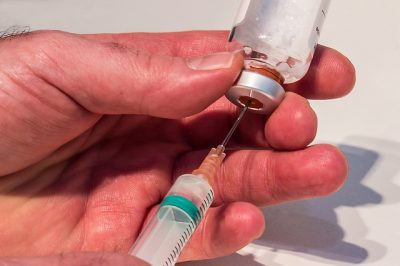The Wild West Heads East: New York, Botox and Barbers
 Shades of the Wild West! As reported recently in the New York Post, Botox—or in this case, “Brotox,”—injections are now being offered in barbershops.
Shades of the Wild West! As reported recently in the New York Post, Botox—or in this case, “Brotox,”—injections are now being offered in barbershops.
This makes a certain amount of sense, according to the author of the article. Many barbershops have undergone a sort of upscale revolution, offering craft beer and other amenities to entice guys to visit, stay a while and spend extra cash.
But is barbershop Botox a good idea? It reminds us of days of old when, for lack of trained professionals in certain areas, barbers doubled as surgeons. The results were often less than optimal.
Injections aren’t exactly surgery, it’s true. But Botox, Dysport and a few other related wrinkle smoothing products are formulated with neurotoxins that paralyze muscles. Without a deep level of understanding of facial anatomy, administering them is risky. In our cosmetic surgery practice in New York, Botox injections are only given by our board certified plastic surgeon, not even by other staff with medical training. When a guy elects treatment in a setting like a barbershop, how much training does the person giving the injection have? And how do they acquire Botox legally?
We spotted another article in a Florida publication discussing the risks of going to an injector without medical school under their belt. This one was about fillers like Juvederm and Restylane. The author, a facial cosmetic surgeon, was responding to a question from a woman referring to “quick and easy filler treatment.”
It’s understandable that injectables of all kinds can seem like simple alternatives to cosmetic surgery. They are less expensive on a one-time basis and downtime is minimal or even nil. But, the cosmetic surgeon does a good job pointing out what can go wrong in several areas when the injector is inexperienced—meaning “quick and easy” is not a phrase most trained doctors would use when referring to fillers.
One important point the author makes is that an inexperienced injector may not understand that there are several different cheek “subunits,” as she calls them. When a patient has significant volume loss, often more than one of these areas needs treatment. Options include the various fillers such as Restylane, Radiesse and Juvederm, each with their own best applications, plus filler layering, fat transfer and even fillers combined with surface treatment such as microdermabrasion and chemical peels. If treatment is not tailored to a patient’s exact needs, the results can end up can end up being ineffective or even unnatural-looking.
Another tricky region the doctor discusses is the area under the eyes. She points out that given its delicate nature—and we would add the proximity to the eye and critical nerves and muscles—it’s extra important to get treatment from a highly experienced professional. When addressing tear troughs, for example, the injector must first understand whether fad pads under the eyes are creating shadows and/or if the skin next to the bridge of the nose has thinned and looks dark. Depending on the answer, a patient may be best treated with eyelid surgery or fillers or both.
Back to article on Botox in the New York Post, the author quotes a man from a hairdresser training school on why guys should feel more comfortable getting treatment in a barbershop. He says, “Having needles near your face is slightly nerve wracking.”
Our point, exactly! If you elect injectable treatment for rejuvenation, do you want a barber on the other end of the needle?
Contact us anytime about non-invasive and surgical options for looking your best. Just use our short email form.